Online Allergy Training
Module 3 – Introduction
This section covers the potential areas where allergens can impact in a factory setting and consideration has to be given to a wide range of issues. Learn about the manufacturing processes when working with allergenic ingredients.
Potential allergen cross-contamination situations
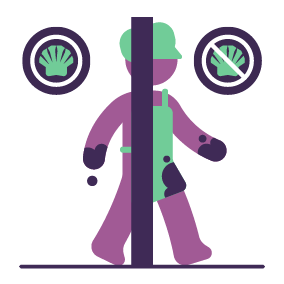
All staff (including temporary staff and contractors) involved in handling ingredients, equipment, utensils, packaging and products should be aware of food allergens and the consequences of their ingestion by sensitive individuals. They should be trained in avoiding cross-contamination of foods by the major food allergens.
Handwashing

Posters encouraging staff to wash their hands after working with allergenic materials should be placed in areas where allergenic products are manufactured. Text could include:
'Always wash your hands thoroughly after coming into contact with allergenic products to avoid cross-contamination'.
Clothing requirements

To ensure that cross-contamination does not occur staff working in the area manufacturing allergenic ingredients must wear the correct uniform.
Rework
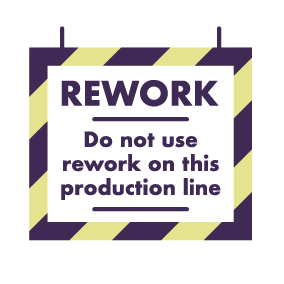
Rework is the material left over from production, which is often reused to make the same or similar product. The rework poster is to encourage staff to be aware of the ingredients they work with and to prevent accidental contamination of the production lines.
Waste control
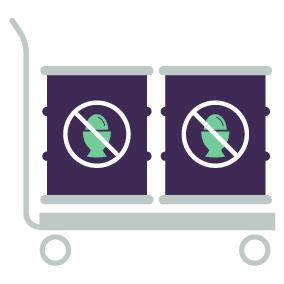
Care should be taken when disposing of allergenic ingredients/products. Allergens should be sealed in containers and removed from the manufacturing area to avoid being mixed with non-allergenic ingredients/products.
Cleaning procedures

Very small amounts of allergens can cause adverse reactions, including potentially fatal anaphylactic shock. Therefore, thorough effective cleaning is necessary in reducing the risks of allergen cross-contamination. Adequate procedures must be in place for cleaning both production and packaging machinery. Where adequate cleaning is not possible the risk of allergen cross-contamination should be assessed and advisory labelling used, if appropriate.
Dedicated equipment
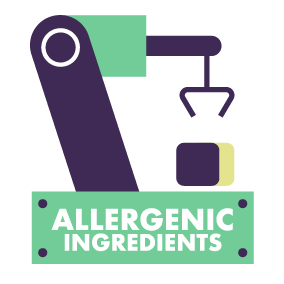
Some manufacturers might choose to dedicate a production line or equipment to products that are free from particular allergens e.g. nut or wheat free. These production lines could still be used to make a number of different products as long as they do not contain that particular allergen.
Dedicated equipment could include balances, sieves, packing machines, storage bins or storage areas.
Ordering from suppliers

Food businesses should establish an appropriate and proportionate policy for assessing the allergen status of ingredients that they use in their own manufacturing processes and premises, and for assessing ingredients used by their suppliers or co-packers, if appropriate.
Manufacturers should ensure that materials are ordered against a clear specification and that they ask appropriate questions of their suppliers.
Allergens found in raw materials

Manufacturers need to be aware of the presence of the major allergens in all raw materials, particularly the potential for allergen cross-contamination from manufacturing and handling activities on the raw material suppliers' sites, as well as earlier in the food chain during harvesting and transport.
This may be through audits or from information provided by suppliers.
Raw material suppliers (and their agents) should be aware of the hazards arising from contamination by allergens and conform to the manufacturers purchase specification.
However, commodity raw material suppliers should only use allergen warning statements on products such as spices and grains, based on an assessment of the risk of cross-contamination.
Clear labelling
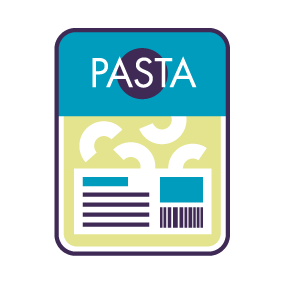
Ingredients should be fully described in specifications. For example, avoid the use of generic terms such as 'vegetable' oils and fats by using specified terms such as corn or rapeseed oil, especially where those allergens are listed in Annex II of EU Regulation No. 1169/2011.
Prepacked foods
When listing the ingredients, food business operators must emphasise the name of allergens in the ingredient list only.
An allergen warning statement such as 'contains x...' to repeat allergen ingredients information is not permitted. Information about allergenic ingredients must be located in a single place i.e. in the ingredients list. The use of an allergen statement to signpost and explain how allergen information is emphasised within the ingredients list is permitted. For example: Allergy Advice: For allergens, see ingredients in bold or Allergy Advice: For allergens including cereals containing gluten, see ingredients in bold.
The use of precautionary allergen statements such as 'may contain...' to indicate the possible presence of an allergen due to cross-contamination has not been affected by the EU FIC and its use will be permitted.
Sieving
If allergenic ingredients are sieved, then the sieving unit should either be dedicated or thoroughly cleaned after sieving allergenic ingredients.
If possible, allergenic ingredients should be sieved after all other raw ingredients have been sieved for the day.
Design of packaging

When designing packaging do consider visibility, clarity and legibility, contrast of text and accuracy (for example the needs of consumers with visual deficiencies such as colour blindness).
Dedicated packaging

Incorrect packaging and/or labelling is a significant cause of allergen related product recalls. Therefore, where possible, consideration should be given to the provision of dedicated packing lines to reduce the risk of mislabelling. By law, food businesses must notify FSS (and the local authority where the business is based) if they need to withdraw products from the market, which don’t comply with food safety requirements.
For more on allergy related recalls please see the Allergy Alerts page on the FSS website.
Barcode scanners

If it is not possible to have dedicated packaging lines for allergenic products, then procedures for checking that the correct labels are applied to products should be implemented and audited regularly so that accurate information is provided to allergic consumers. Checks should be in place between processing and packing to ensure the correct packaging is used, for example by using bar code scanners to trace the product through the production process.
Remove packaging after each run
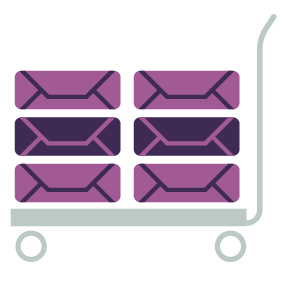
There should be systems to ensure packaging is removed at the end of a run, including any packaging that may be in the wrapping machine. This will help to avoid packaging mix-ups when the product to be packed is changed and, therefore, reduce the number of instances in which misleading information is passed to the consumer.
Multipack products

It is important to ensure that the correct outer packaging is used for multipack products and that allergen information appears on, or is visible through, both the inner and outer wrappers.
General cleaning

Very small amounts of some allergens, such as nuts, can cause adverse reactions, including potentially fatal anaphylactic shock. Therefore, thorough cleaning that is effective in reducing the risks of allergen cross-contamination should be used.
Particulate food materials (for example powders) present significant cleaning problems and any relevant industry guidance, where this has been developed, should be followed. Adequate procedures must be in place for cleaning both production and packaging machinery. Where adequate cleaning is not possible, then the risk of allergen cross-contamination should be assessed and advisory labelling used, if appropriate.
Where adherence to a cleaning regime is part of a separation system, it should be validated as 'fit for purpose' and compliance should be monitored.
Swab testing

Cleaning practices that are satisfactory for hygiene purposes may not be adequate for removing some allergens and their validity for such a purpose should be assessed (for example via residue/environmental swab testing). Equipment may need to be dismantled and manually cleaned to ensure hard to clean areas are free from allergen residues.
Compressed air cleaning
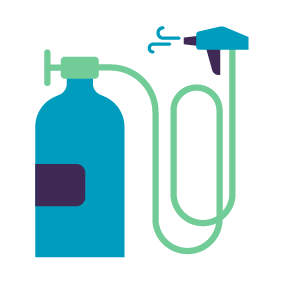
Care is needed to ensure that the cleaning of one line does not contaminate another (using compressed air cleaning, for example), or an area that has already been cleaned (by cleaning dry mix areas from the top down).
On the spot cleaning for spillages

Any spillages that occur during production, storage and transportation should be cleaned up immediately to ensure that there is no subsequent allergen cross-contamination. Where known allergen contamination has occurred, the contaminated material should be labelled and physically moved away from the non-contaminated ingredients and work-in-progress.
Dismantling equipment
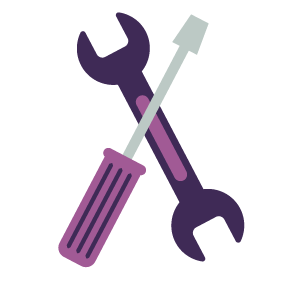
Equipment might need to be dismantled and manually cleaned to ensure hard to reach areas are free from allergen residues. At this point, consideration should be given to maintenance activities, such as the use of dedicated tools or adequate cleaning procedures where tools are not dedicated.
Storage area
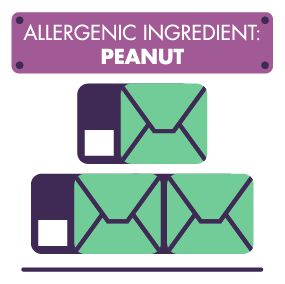
Steps should be taken to ensure that non-allergenic ingredients do not come into contact with allergens in subsequent handling and storage. Allergenic raw materials should be stored in clearly identified areas (for example using colour-coded boxes or the demarcation of storage areas using painted lines on the floor).
Storage containers

Where allergenic raw materials are de-bagged or de-boxed, they should, if possible, be placed in dedicated lidded and labelled containers and made easily identifiable. Such containers should not be used for storage of any other raw materials.
Allergen control systems
Allergen control systems should be monitored and reviewed to provide assurance that they are working correctly. This is done most effectively by an audit or 'health check' of the system. In addition to routine checks on manufacturing operations, an overall 'health check' can find any weaknesses in the system and then corrective actions can be taken. A key benefit of auditing the system is to provide evidence of due diligence in managing allergens.
The 'health check' should, as a minimum, include:
- review and verification of the hazard analysis and hazard management system
- product and ingredient specifications
- operating procedures
- cleaning procedures
- training records – demonstration of competence
- analysis of customer complaints
- good Manufacturing Practices
Review and verification of the hazard analysis and hazard management system
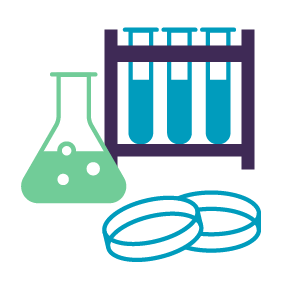
Validation and verification procedures should be implemented to confirm that the hazard control system is working correctly. This might include auditing of control procedures and any tests, random sampling and analysis. The hazard control system should be reviewed regularly and after any changes in the manufacturing process or premises to confirm that all critical control points are under control. Following completion of this hazard assessment, manufacturers should then determine whether allergen advisory statements are appropriate.
Product and ingredient specifications

Manufacturers need to be aware of the presence of the major allergens in all raw materials, particularly the potential for allergen cross-contamination from manufacturing and handling activities on the raw material suppliers sites, as well as earlier in the food chain during harvesting and transport. This might be through audits or from information provided by suppliers.
Manufacturers should ensure that materials are ordered against a clear specification and that they ask appropriate questions of their suppliers. Raw material suppliers (and their agents) should be aware of the hazards arising from contamination by allergens and conform to the manufacturers purchase specification. However, commodity raw material suppliers should only use allergen warning statements on products such as spices and grains, based on an assessment of the risk of cross-contamination. Scientific work currently underway to establish meaningful allergen thresholds and develop appropriate testing methodologies will help in making such assessments.
Ingredients should be fully described in specifications, for example, avoid the use of generic terms such as vegetable oils and fats, by using specified terms such as peanut or rapeseed oil, especially where those allergens are listed in EU Food Information for Consumers Regulation (EU FIC) No.1169/20111.
Training records

Manufacturers should ensure that their employees receive relevant and structured ongoing training so they remain aware of food allergens and their consequences. Such training should explain the facts as well as highlighting the company's good manufacturing practice principles and effective food safety system. Manufacturers should keep certificates of registration, qualifications and documents to record training completed by their employees.
Analysis of customer complaints

Customer complaints should be investigated and changes made where necessary. Manufacturers should keep a record of these customer complaints and show what action was taken as a result.
Good manufacturing practices

Most food producers already employ good manufacturing practices (GMP) to ensure that they are able to produce food safely. GMP requires appropriate manufacturing operations, effective food safety systems (using HACCP-based principles), and quality assurance systems, as well as a commitment and discipline to ensure products meet food safety, quality and legal requirements.
Separating allergen-containing products

Where it is not possible to have dedicated production facilities, there are a number of ways of separating the production of allergen-containing products from those that do not contain the allergen.
These can include:
- using different areas of the factory
- using physical barriers between the production lines
- using dedicated equipment
- minimising unnecessary movement of materials
- appropriate scheduling of production runs, including appropriate cleaning of equipment between production runs
- controlling rework, ensuring that residual material containing an allergen is not reworked into an allergen-free product
- separating the air supply, where this is practical
Module 3 – Dedicated equipment
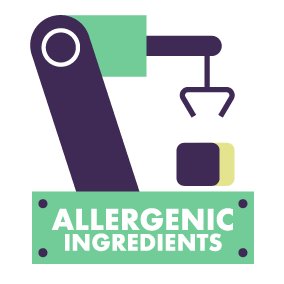
Consideration should be given to the dedication of equipment in production facilities. For example, weighing equipment, scoops and utensils should be dedicated and the weighed product should be placed in dedicated, lidded and labelled containers.
Consideration should also be given to colour coding equipment, although this may not be practical where a number of allergens are being handled and colour coding is used already for the identification of cooked or raw ingredients or vegetarian products.
Avoiding cross-contamination

If it is not possible to dedicate areas or equipment, it is important to avoid cross-contamination between these and other operations, including controlling the movement of equipment and personnel.
Physical separation should be considered for 'high risk' products (such as milk in baby foods) and the implications of changes to the factory layout should be assessed.
Consideration should also be given to the ease of cleaning equipment. Avoiding the crossover of production lines and allowing adequate space for effective cleaning will help minimise the risk of allergen cross-contamination.
Air supply
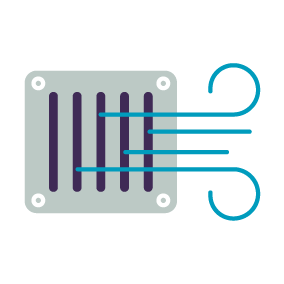
It is recommended that, wherever practically possible, consideration should be given to the implications of a common air supply (for example, milk powder used elsewhere in a factory may enter the air supply and then be deposited on the surface of dairy-free desserts).
Where factories produce nut products and nut-free products, dedicated air conditioning/extraction fan systems could be used to contain nut dust, or positive pressure could be used in nut-free rooms to prevent nut traces entering the room in the air.
Manufacturing schedules

When scheduling the manufacture of allergenic products, there should be a consideration of whether it is possible for products not containing the allergenic food to be manufactured first, with products containing the allergenic ingredients made at the end of a production run.
Additionally, long runs of allergenic products should be undertaken wherever possible to minimise changeovers, and these should be followed by a major clean down.
Module 3 – Rework
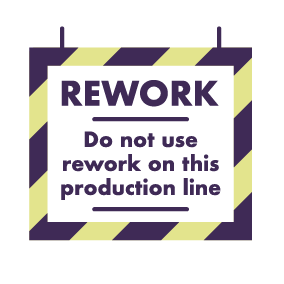
Rework that contains allergenic ingredients should be reworked only into products that contain that allergen (for example chocolate that contains nuts or nut fillings should only be reworked into other nut-containing chocolates).
Rework should be clearly identified in order for it to be tracked in the manufacturing process. Oils used for cooking allergenic foods (for example nuts, shellfish and fish) should not be used subsequently for cooking products not containing the allergen.
Before you begin the quiz
The following two questions are optional and help us with our reporting and providing you a better service.